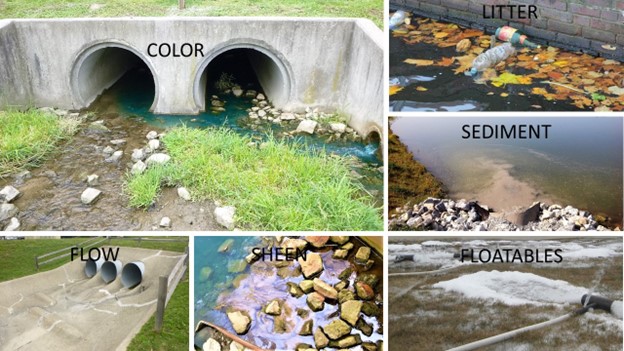Illicit Discharge
Illicit Discharge Detection and Elimination
What is an Illicit Discharge?
An illicit discharge is any discharge to a MS4 conveyance that is not composed entirely of storm water, except naturally introduced floatables, such as leaves or tree limbs. The storm water drainage system includes street curbs and gutters, ditches, catch basins, yard inlets, and underground storm pipes.
Examples of an Illicit Discharge include:
- Pouring paint or other chemicals into or near the storm drainage system.
- Changing oil or antifreeze over or near a storm structure and allowing the liquid to flow into the storm drainage system.
- Washing vehicles where the runoff could drain into the storm drainage system.
- Washing dumpster pads and allowing the runoff to drain into the storm drainage system.
- Dumping grass clippings into a storm water basin or inlet or into the street.
Why is it a problem?
Illicit discharges are a problem because unlike wastewater, which will be treated at a wastewater treatment facility before it is discharged back into waterways, storm water does not go to a treatment facility. As a result, as the storm water flows across developed and undeveloped land, it picks up pollutants and carries those pollutants to the nearest storm sewer or ditch. When these storm sewers and ditches outlet into creeks and waterways, the pollutants are also discharged into the creeks and waterways.
Illicit discharges and connections are regulated through the County Code.
What can you do to help?
Residents can help by properly disposing of all automotive fluids, household wastes, etc. Never dump any of these materials into any ditches or storm sewers! To prevent improper dumping of these items, numerous recycling opportunities are provided throughout the county every year. For more information on the availability of recycling, please visit the Vanderburgh County Solid Waste District website.
Be sure you know what illicit discharges are so you can help prevent water pollution and keep our streams clean! See more information and examples: Spotting Illicit Discharges or watch this short video.

Citizen Involvement
Citizens of Vanderburgh County may contact the County Engineer at 812-435-5773 or Stormwater@vanderburghgov.org to report the illegal dumping of chemicals, heavy erosion from constructions sites, polluted water, or other illegal connections to the storm system (such as septic tank discharges or washing machine wash water).


